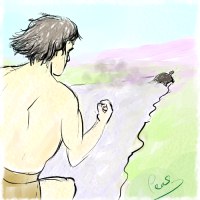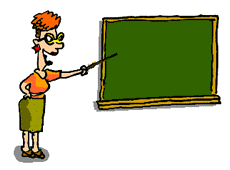Or search by topic
Number and algebra
Geometry and measure
Probability and statistics
Working mathematically
Advanced mathematics
For younger learners
Published 2011
Paradoxes
A paradox is a statement that seems to be both untrue and true at the same time. Another way of saying this is that a paradox seems to contradict itself, even though it appears to be based on facts and logic. Paradoxes are sometimes used in mathematics as interesting puzzles, but they are also useful because they show how it is important to make sure there are no loopholes in mathematical
arguments. They also show that you shouldn't believe that a statement is true until you have carefully thought about the mathematics.
Achilles and the Tortoise
In the 5th century B.C. Zeno used his mathematical knowledge to develop this famous paradox.
 Achilles was in a race with a tortoise, and the tortoise was given a head start of 1000 paces. Achilles could run 10 times faster than the tortoise. After Achilles had run 1000 paces, the tortoise would still be 100 paces ahead! When Achilles had run the next 100 paces, the tortoise would still be 10
paces ahead. Zeno argued that Achilles would keep gaining on the tortoise but never catch him.
Achilles was in a race with a tortoise, and the tortoise was given a head start of 1000 paces. Achilles could run 10 times faster than the tortoise. After Achilles had run 1000 paces, the tortoise would still be 100 paces ahead! When Achilles had run the next 100 paces, the tortoise would still be 10
paces ahead. Zeno argued that Achilles would keep gaining on the tortoise but never catch him.
Is his thinking correct? What do you think would happen as the race went on?
Points and Lines
Here's another of Zeno's paradoxes. (To think about this one you need to know that in geometry a 'point' is thought of as a 'location' or an 'idea' rather than a 'thing', so it doesn't really have any size. You also need to know that a 'line segment' is a piece of a line and can be measured).
If a point has no size, then adding another point to it will still have no size. So you can never make an object of any size by joining points. However, if a point does have size, then a line segment must have infinite length because it is made up of an infinite number of points.
The Surprise Test
This is a more modern one for you to think about.

A teacher tells her class that there will be a test given on one afternoon next week. She also tells them that they will not know which day until they are told on the morning of the test.
Why can't this test be given as a surprise?
(Hint: Start by thinking why the test couldn't be given on the Friday, then think backward through the week).
You may also like
Adding All Nine
Make a set of numbers that use all the digits from 1 to 9, once and once only. Add them up. The result is divisible by 9. Add each of the digits in the new number. What is their sum? Now try some other possibilities for yourself!
Summing Consecutive Numbers
15 = 7 + 8 and 10 = 1 + 2 + 3 + 4. Can you say which numbers can be expressed as the sum of two or more consecutive integers?

